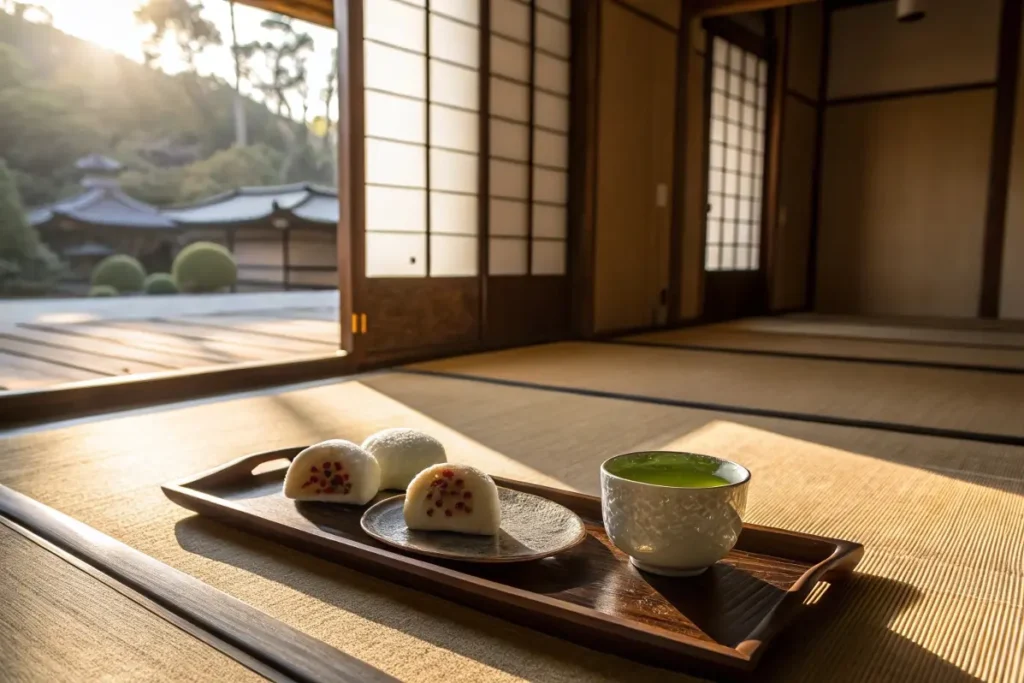If there’s a single ingredient that epitomizes anko japanese dessert culture, it’s anko—the sweet red bean paste commonly used in confections like mochi, dorayaki, and taiyaki. But what is Japanese anko, and why does it hold such a special place in Japan’s culinary heritage? Essentially a paste made from azuki beans (red beans) and sugar, anko adds a unique balance of sweetness and earthy flavor to traditional treats. Contrary to the sugary punch of Western desserts, anko offers a gentler, more nuanced sweetness that pairs beautifully with bitter green tea or savory snacks.
Curious about what anko paste tastes like? Think of a mildly sweet, slightly nutty flavor. Often described as having a soft, creamy texture when smooth—or a more robust mouthfeel when left chunky—anko becomes the soul of many Anko Japanese Desserts, from delicate wagashi to modern pastry hybrids. Is anko healthy? In moderation, yes: azuki beans are packed with protein, fiber, and minerals, though sugar content does vary. This subtle, balanced taste is partly why anko is so beloved in Japan’s dessert repertoire.
Looking to explore the realm of azuki bean paste in your own kitchen? You can discover more about traditional sweets and modern twists at our Traditional Japanese Desserts Recipe page. For now, let’s dive into the history, recipes, and cultural significance of anko, revealing why it’s the heart of japanese anko confections.
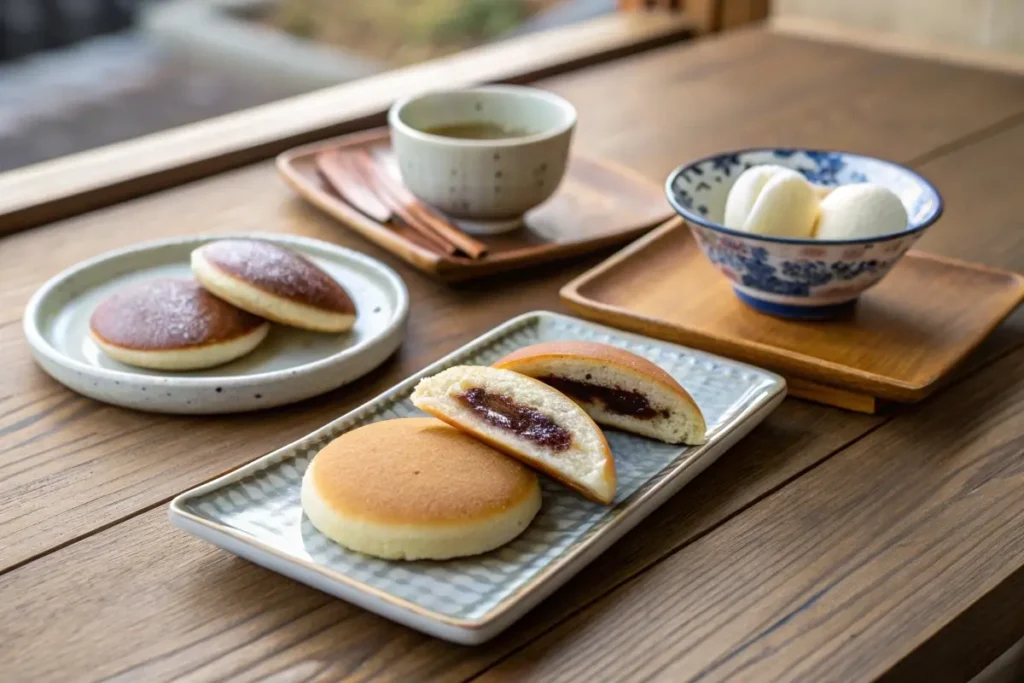
Table of Contents
1. Delving into Anko: Types, Taste, and Versatility
1.1 What Is Anko?
In its simplest form, anko is a paste made by boiling azuki beans with sugar. After cooking, the mixture may be mashed or sieved. The taste profile is mild and sweet, but not overly sugary—perfect for balancing bitter teas or subtle mochi flavors. Anko’s color typically ranges from deep burgundy to darker red-brown, depending on bean quality and cooking time. This versatile paste is a key ingredient in many Anko Japanese Desserts, where its rich, balanced flavor enhances a wide variety of traditional and modern confections.
Kinds of Anko
- Koshian (こしあん): A silky, fine paste, achieved by straining out the bean skins. Commonly used in mochi (daifuku) or as a smooth filling in pastries like dorayaki.
- Tsubuan (つぶあん): A coarse paste retaining some bean fragments or skins. This chunkier texture is ideal for taiyaki, certain breads (an-pan), or less formal sweets.
1.2 Flavor Profile and Texture
What does anko paste taste like? The best answer: gently sweet with a hint of earthy nuttiness. Azuki beans themselves have a natural savoriness that, when sweetened, feels balanced rather than cloying. The texture can be quite dense if used as a thick filling (like in manju), or more spreadable if mixed with water or syrup.
1.3 Health Considerations
Is anko healthy? In moderation, yes. Azuki beans are rich in protein, fiber, and minerals (like iron). Though sugar is essential in anko, it’s typically less overwhelming than frosting-laden Western pastries. Some modern chefs use lower sugar or alternate sweeteners like honey or stevia to keep the sweet taste while boosting health value.
- Protein & Fiber: Beans supply these macronutrients, promoting satiety.
- Minerals: Azuki beans carry iron, magnesium, and other micronutrients.
- Watch the Sugar: Traditional recipes can be high in sugar, so portion control or reduced-sugar versions help maintain the health benefits.
1.4 Anko’s Cultural Role
In Japan, anko is inseparable from tea ceremonies, festivals (like New Year’s osechi), and daily snacks. Its mild sweetness complements the astringency of matcha or sencha, forming an elegant duo at gatherings. Anko also symbolizes tradition—its presence in centuries-old sweets like yokan or wagashi underscores Japan’s culinary heritage.
1.5 Popular Uses
- Mochi Fillings (Daifuku): The chewy rice dough envelops sweet bean paste, sometimes with fruit (ichigo daifuku).
- Dorayaki: Two pancake rounds hugging anko at the center.
- Taiyaki & Imagawayaki: Fish-shaped or round pastries with anko molten core, sold by street vendors.
- Manju: Steamed buns typically filled with anko.
- Bread Spread: Anko occasionally graces toast or buns for breakfast in sweet-savory fusions.
To see how azuki bean paste can morph into various shapes and textures, you can explore our Japanese Dessert Recipes, featuring mochi, anko-based snacks, and more. The inherent flexibility of anko—thick or thin, chunkier or smoother—makes it an indispensable staple in anko japanese dessert culture.
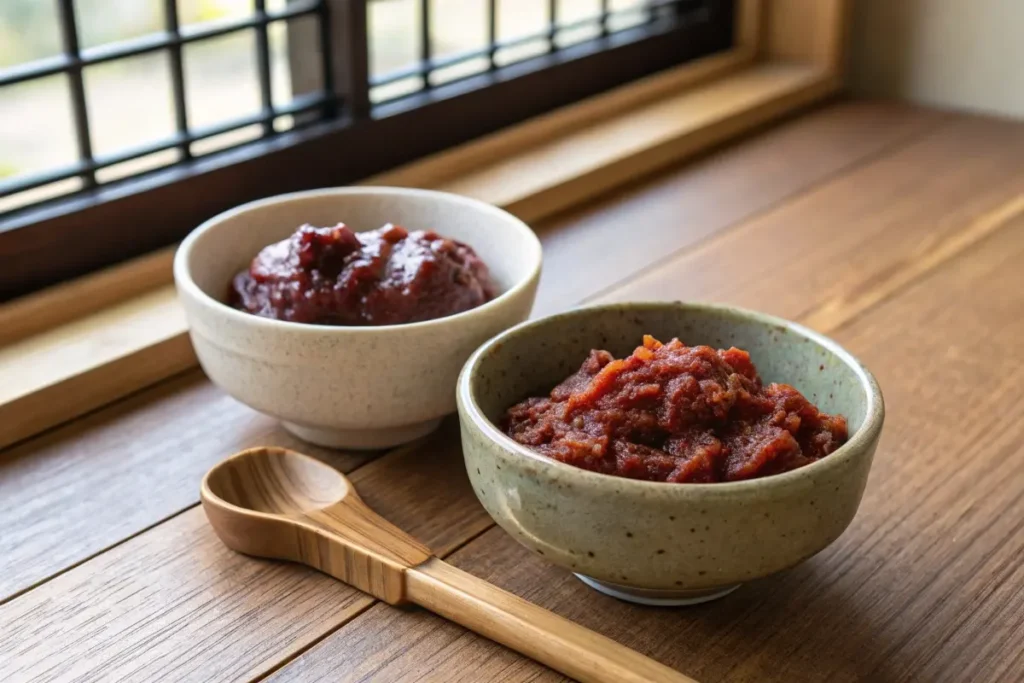
2. Main Dishes Featuring Anko
2.1 Daifuku: Soft Mochi, Creamy Filling
A staple anko japanese dessert, daifuku consists of a stretchy mochi exterior and a sweet bean paste core. Some versions add fresh strawberry (ichigo daifuku) or whipped cream for modern flair. The synergy of chewy mochi and subtly sweet anko makes daifuku a must-try sweet.
Pro Tips for Making Daifuku:
- Use mochiko or shiratamako flour for optimal chewiness.
- Lightly dust your workspace with cornstarch or potato starch to prevent sticking.
- Keep the anko filling chilled or shaped into small balls for easy mochi-wrapping.
2.2 Dorayaki: Pancake Sandwiching Anko
Dorayaki pairs two fluffy pancakes with an anko layer inside. This convenient sweet ranks high among both children and adults. If you want an anko dessert that travels well or fits into a lunchbox, dorayaki’s portability is perfect.
Variations: Some incorporate chestnuts, whipped cream, or sweet potato to create unique flavors. The standard version, though, remains an iconic symbol of homey sweetness. If you like savory-sweet combos, try adding a pinch of salt to your anko filling to intensify the bean flavor.
2.3 Taiyaki and Imagawayaki
Taiyaki—a fish-shaped pastry stuffed with anko, custard, or chocolate—offers a crispy exterior and warm center. Street vendors typically grill them in fish-shaped molds, delighting passersby with the sweet aroma. Imagawayaki (sometimes called obanyaki) is a round counterpart: thick pancake buns with an anko middle. Both evoke festival charm and nostalgia.
Serving Suggestion: Pair with green tea or coffee. For a more adventurous twist, add matcha ice cream on top, turning your pastry into a warm-cold treat.
2.4 Ozoni Soup with Anko Mochi?
Though less common, some Japanese households play with fusion by adding sweet mochi to savory soups. Typically, ozoni involves savory mochi in a broth, but a sweet variant might appear in certain regions or creative kitchens. The subtle sweetness of anko mochi can contrast interestingly with mild soups, though it’s not standard across Japan.
2.5 Western Spins on Anko
Even Western-inspired pastries can host anko. Anko-filled croissants or anko brownies blend Eastern and Western elements. Whether used as a topping, swirl-in, or core filling, anko elevates typical desserts with a new dimension of flavor.
For step-by-step guidance on mochi-based sweets—like daifuku or variations—see our Mashed Japanese Sweet Potato Recipe for how starchy bases can pair with sweet elements. You might experiment by combining sweet potato puree and anko in mochi or pastry forms, broadening your dessert repertoire.
2.6 Seasonal Pairings
- Spring: Ichigo daifuku merges the tang of fresh strawberries with anko.
- Summer: Mix anko into shaved ice (kakigori) or layer it in chilled parfaits.
- Autumn: Incorporate roasted chestnuts or sweet potatoes into anko pastries.
- Winter: Serve warm anko-filled buns or oshiruko (sweet red bean soup with mochi) for cozy comfort.
By mixing anko’s mild sweetness with complementary textures—creamy, chewy, crispy—these recipes for japanese desserts highlight the bean’s adaptability. The possibilities stretch from traditional mochi to playful fusions. The consistent thread remains: let the gentle bean flavor and moderate sugar create a satisfying, balanced dessert.
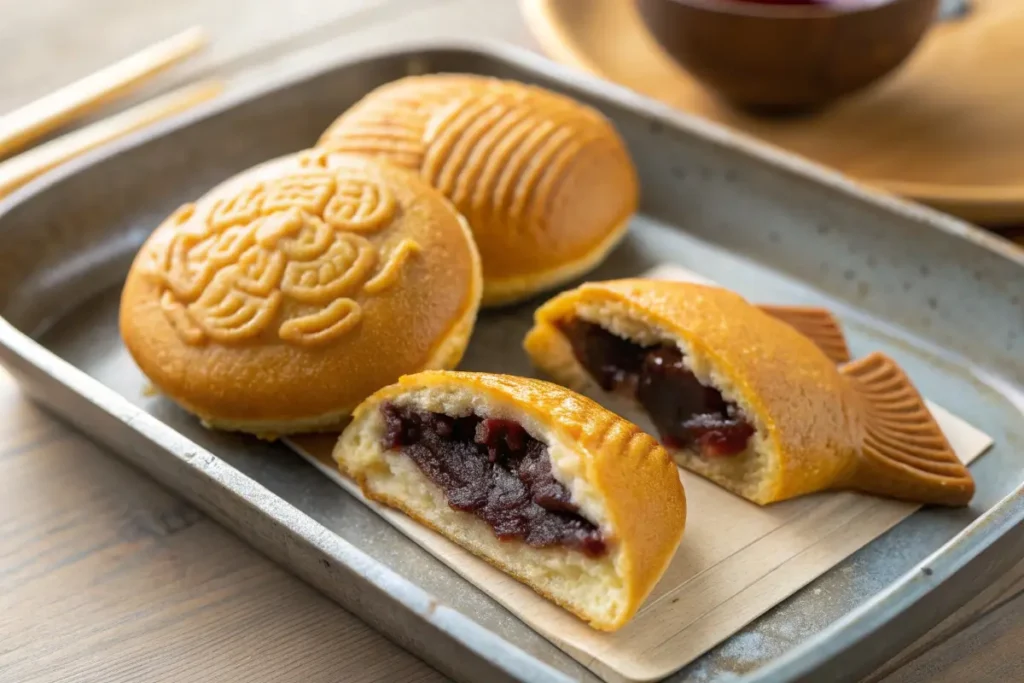
3. History and Examples: Anko Japanese dessert
3.1 Early Bean Usage
Long before sugar became widely available, beans played a key role in Japanese cuisine as a protein source. As trade routes expanded in the 8th to 9th centuries, sweeteners like honey or early sugars combined with boiled azuki, forming the first versions of sweet bean paste.
3.2 Edo Period’s Sweet Boom
By the Edo era (1603–1868), sugar imports from the Ryukyu Kingdom (Okinawa) and overseas enabled broader sweet-making. Anko—particularly smooth koshian—rose in popularity as wagashi artisans perfected milling and sieving beans. Traditional shapes referencing seasonal flowers or folk tales transformed anko-based confections into edible art. The tea ceremony also cemented the custom of having mildly sweet wagashi (often with anko) to offset bitter matcha.
3.3 Meiji to Modern Times
With Western desserts introduced post-1868, anko found new life in innovative pastries. An-pan—a sweet bun with anko center—emerged in the late 19th century, bridging Japanese anko with European breadmaking. This synergy continued into dorayaki, castella sponge cakes swirled with anko, and more. By the mid-20th century, conbini stores started selling individually wrapped anko confections, normalizing them as everyday treats.
3.4 Contemporary Fusion
In modern Japan, anko is no longer confined to wagashi shops. Cafés experiment with anko lattes or anko cheesecakes, while home bakers incorporate azuki bean paste into brownies or muffins. Social media spurs constant reinvention—like anko boba tea or mochi donuts stuffed with sweet bean paste. This cross-cultural creativity helps anko remain relevant in a rapidly evolving dessert scene, making it a versatile ingredient in many Anko Japanese Desserts enjoyed around the world.
Anko Abroad: As Japanese cuisine’s global influence grows, sweet bean paste appeals to those seeking unique dessert flavors with moderate sugar. It is increasingly found in supermarkets around the world, sold in jars or vacuum packs. People curious about “red bean paste recipe” discover that homemade anko is simpler than expected.
For more insights on how anko fits into broader Japanese dessert patterns, check out our Japanese Dessert Recipes overview, which includes an array of anko-laden confections. Ultimately, anko’s history illustrates Japan’s ability to evolve while honoring tradition—making this humble paste a cornerstone of anko japanese dessert culture for centuries.
4. Practical Examples/Use Cases “”
4.1 Home Cooking Adventures
Scenario: You’re new to anko, but love mochi.
- Approach: Make a quick anko recipe by boiling azuki beans, adding sugar, then mashing to your desired consistency. Use it to fill daifuku mochi or spread on toast for a sweet-savory start to the day.
- Benefit: Anko can be stored in the fridge for about a week, letting you experiment with multiple desserts or even sweet-salty side dishes.
4.2 Cafe Innovations
Scenario: A small bakery or café wants to stand out.
- Approach: Introduce an anko croissant or anko crêpe, pairing the bean paste with fresh fruit or whipped cream. Market them as “Japanese-inspired sweet pastries.”
- Upshot: Attract dessert explorers and fans of global cuisine. This unique spin differentiates your offerings from typical pastries.
4.3 Cultural Events or Festival Booths
Scenario: Hosting a Japanese cultural day at a local community center.
- Approach: Offer a “make-your-own anko mochi” station. Provide small mochi rounds, a bowl of anko, and toppings (kinako, sesame seeds). Kids and adults alike enjoy shaping mochi and discovering the mild sweetness of bean paste.
- Result: Attendees learn about what flavour is anko, how it’s healthier than many processed sweets, and enjoy an interactive experience.
4.4 Bento Dessert or Office Snack
Scenario: You want a quick sweet treat without feeling heavy.
- Approach: Prepare anko-filled buns or small anko balls, store them in a sealed container.
- Advantage: The moderate sugar content and protein from beans provide steady energy. Coupled with unsweetened tea, you get a balanced midday pick-me-up.
For more savory-sweet combos—like sweet beans alongside grilled dishes—see our Japanese Chicken Fried Rice Recipe to create an entire meal that pairs well with a small anko treat. These use-case scenarios highlight how anko japanese dessert culture can infuse into daily routines, from special events to everyday lunches, bridging flavor and tradition in each bite.
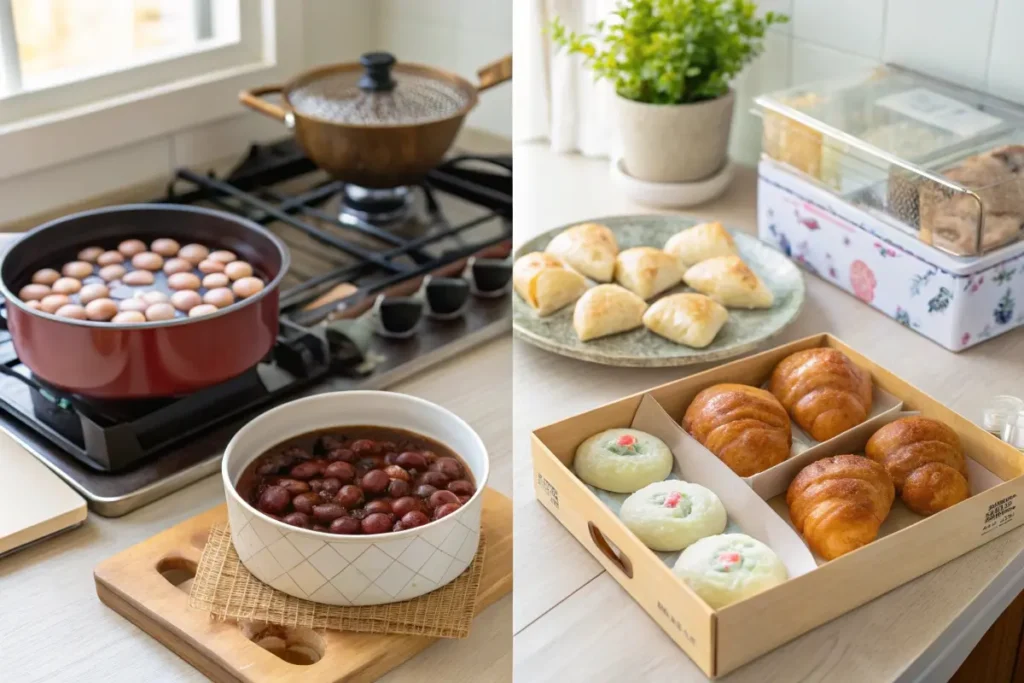
5. FAQs about anko japanese dessert
5.1 What is Japanese anko?
Anko is a sweet paste made from boiled azuki beans mixed with sugar. It serves as the foundation for many japanese dessert recipes, such as mochi, dorayaki, and taiyaki.
5.2 What does anko paste taste like?
Anko has a gentle, earthy sweetness. Azuki beans impart a subtle nutty or grassy note, with sweetness generally milder than Western frosting. Different textures—smooth (koshian) or chunky (tsubuan)—vary the mouthfeel but keep the same delicate flavor profile. This unique taste makes Anko Japanese Desserts a perfect complement to many traditional and modern sweets, where its mild sweetness balances other bold flavors.
5.3 Is anko healthy?
In moderation, yes. Azuki beans provide protein, fiber, and minerals. Sugar content can be considerable, but it’s often less overwhelming than sugar-heavy confections. You can also reduce sugar or use alternative sweeteners for a healthier twist.
5.4 What flavour is anko commonly described as?
Often described as lightly sweet and slightly nutty, with a hint of bean-like earthiness. The flavor is unique yet not overpowering, making it versatile for pairing with matcha, fruit, or whipped cream.
5.5 Can I make anko at home easily?
Yes. Boil azuki beans until soft, add sugar, and mash or sieve to your desired texture. Koshian requires removing bean skins through a sieve, while tsubuan keeps them. Once cooled, store anko in the fridge for use in mochi, pancakes, or as a toast spread. This homemade anko is perfect for creating your own Anko Japanese Desserts, bringing the authentic taste of Japan into your kitchen.
5.6 Does anko appear in savory dishes?
It rarely appears in fully savory dishes, but some chefs experiment with sweet-salty combos. Anko mochi might occasionally top a mild soup, or anko could accompany certain grilled items. Traditionally, though, anko remains tied to dessert or snack contexts.
5.7 Where can I learn more anko-based recipes?
Check out our Japanese Dessert Recipes for instructions on mochi, dorayaki, or an-pan. You’ll find tips on everything from basic anko prep to advanced pastry shaping, ensuring your anko endeavors succeed.
Conclusion for anko japanese dessert
In anko japanese dessert culture, a simple paste of azuki beans and sugar opens the door to an expansive world of sweet possibilities. From the pillowy mochi of daifuku to the crispy fish-shaped taiyaki, anko-based confections strike a balance between gentle sweetness and satisfying texture. Whether you prefer the silky smoothness of koshian or the heartier chew of tsubuan, anko’s earthy flavor complements tea ceremonies, modern cafes, and humble home kitchens alike.
Ready to experiment with azuki bean paste in your own cooking? Start by mastering basic anko preparation or picking up a store-bought version. Then craft daifuku mochi, fill dorayaki pancakes, or even swirl anko into Western pastries like brownies or doughnuts for a unique fusion. For more creative Anko Japanese Dessert ideas and step-by-step guides, visit our Japanese Dessert Recipes. No matter which sweet path you choose, anko lends each dish a signature taste that’s distinctly Japanese—mild, wholesome, and deeply rooted in tradition.
Whether served at a vibrant street stall or in the calm of a tea ceremony, anko exemplifies the essence of Japanese confectionery. Give this versatile paste a try, and discover how a centuries-old tradition can inspire delicious, healthful, and eye-catching Anko Japanese Desserts for family and friends.
